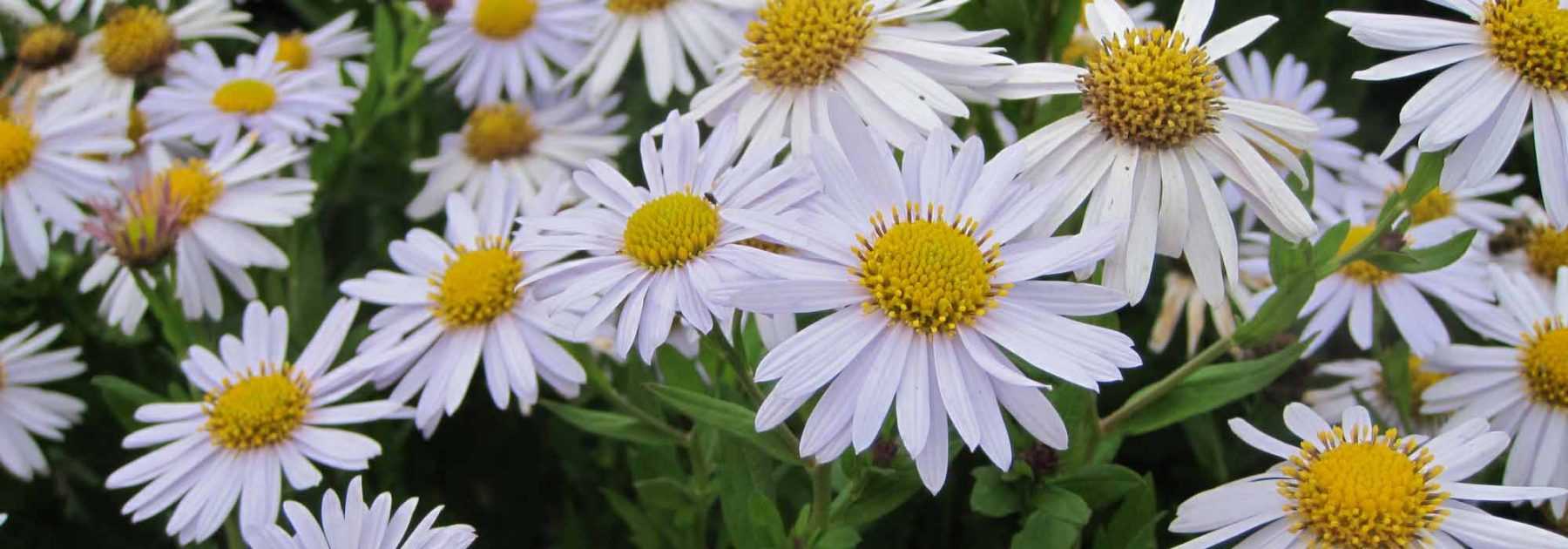
Kalimeris: Planting, Growing and Care
Contents
The Kalimeris in a few words
- Kalimeris is a highly floriferous perennial, quite similar to asters, offering one of the longest flowering periods in the garden
- Its daisy-like flowers in white, blue or lilac bloom continuously throughout summer until autumn
- This is an exceptionally easy plant to grow, thriving in various conditions, fully hardy and completely disease-free
- Highly tolerant, Kalimeris adapts to all soil types and only requires plenty of sunshine!
- With its charming cottage-garden appeal, this perennial is perfect for summer borders, prairie-style gardens and mixed borders
Our expert's word
What would our summer and autumn gardens be without these pretty little white, blue or lilac daisies? Kalimeris is a lovely perennial with aster-like flowers, yet still unjustly overlooked. It has one major advantage over its little cousin the aster: a much longer flowering period, great hardiness and extraordinary adaptability.
Whether it’s the Kalimeris incisa with its numerous cultivars, Kalimeris incisa ‘Madiva’, ‘Alba’, ‘Blue Star’, ‘Nana Blue’, or the Kalimeris pinnatifada Hortensis with its countless double flowers, they produce a profusion of little stars from June to September, sometimes even until October, without interruption.
The flowering of Kalimeris offers unparalleled freshness in summer. Its sunny blooms are classics in naturalistic sunny gardens and mixed borders, bringing great delicacy and charm.
Very hardy (it easily withstands temperatures below -15°C), easy to grow, never diseased, nothing damages its upright form—not even wind, rain or drought. It’s a plant of extreme vigour that is bound to thrive in the garden!
It will reward you if planted in ordinary to fertile soil, moist yet well-drained, in full sun or partial shade.
Discover Kalimeris, this summer perennial that’s little-known yet so easy-going, and create fresh, long-flowering displays!
Description and Botany
Botanical data
- Latin name Kalimeris
- Family Asteraceae
- Common name Kalimeris
- Flowering From June to October
- Height 0.40 to 1.20 m
- Exposure Sun, partial shade
- Soil type All types, well-drained
- Hardiness beyond -15°C
The Kalimeris, sometimes called “Japanese Aster” or “Summer Aster”, is a herbaceous perennial cousin of Asters and daisies, belonging to the Asteraceae family, native to the woods and meadows of East Asia.
There are about ten curiously old-fashioned species, the most common in our gardens being Kalimeris incisa, which has given rise to interesting cultivars such as ‘Blue Star’, ‘Charlotte’, ‘Madiva’, and ‘Nana Blue’. Other less common species like Kalimeris pinnatifada, Kalimeris mongolica, and Kalimeris yomena with ivory-variegated foliage are also occasionally available for cultivation.
Fast-growing, Kalimeris is a rhizomatous, spreading plant that gradually extends over 1 to 2 metres within about ten years, eventually forming beautiful flowering colonies.
It grows in an upright, bushy clump, rounded in shape, producing new stems each year that branch out. While its habit is compact, dense, and always tidy, the highly branched stems give the plant a light and airy appearance.
In this aster family member, size varies by species and variety. It reaches a minimum height of 40 cm but, in good conditions, can grow up to 1.20 m, like Kalimeris incisa ‘Madiva’, one of the tallest Kalimeris. It’s a long-lived perennial that, once established, can thrive for many years. Some forms of Kalimeris self-seed readily.
From this rhizomatous base emerge rigid stems in spring, starting in March, from a rosette of basal leaves. These upright, branched stems bear numerous alternate leaves, oblong to round, sometimes very fine and deeply cut in Kalimeris pinnatifida, slightly to deeply indented.

Various flower colours: Kalimeris incisa ‘Nano Blue’, Kalimeris mongolica ‘Antonia’, Kalimeris pinnatifida ‘Hortensis’, Kalimeris incisa ‘Madiva’.
The leaves can be smooth or rough to the touch. Ranging from 3 to 15 cm long, they are smaller and more deeply cut on the lower stems and entire on the upper parts. Light to dark green, they are dark green variegated with chartreuse and cream in Kalimeris yomena.
Deciduous, this fresh and vigorous foliage, typical of the aster family, resembles that of its close relatives: daisies, Heleniums, and Echinaceas. The leaves emit a slight lemony scent when crushed.
These leafy stems form a mossy, toothed, verdant cushion from which emerges a constellation of small flowers from late spring. The summer bloom of Kalimeris has incomparable freshness.
Even more than its cousin the Aster, Kalimeris offers one of the longest flowering periods, beginning in May-June and lasting until the first frosts. Similar to Asters, the flower heads measure 2 to 4 cm in diameter and resemble daisies. They are grouped in corymbs. The large golden-yellow centre of this fluffy pompon is surrounded by a row of slender, elongated ray florets arranged in one or two rows; Kalimeris pinnatifida var. hortensis bears very double flowers.
White with subtly violet hues, pale lavender-blue, soft blue, lilac-blue, or entirely white, these ray florets display shades with unique luminosity and freshness.
This remarkably generous, nectar-rich bloom lasts all summer, for 6 to 10 weeks: the flowers renew continuously, irresistibly attracting pollinating insects throughout the 5-month flowering period.
They make excellent cut flowers for rustic bouquets, lasting about ten days in a vase.
If stems are not cut back after flowering, the dried flower heads hanging from their rigid stems will persist into the dull season; their seeds left in place will provide winter sustenance for certain birds.
Kalimeris is a very hardy plant, tolerating at least -20°C, and can be grown throughout France. Highly tolerant, it thrives everywhere, in all soils, all exposures, and all climates. Never diseased, robust once established, it fears neither wind, nor rain, nor scorching sun, nor occasional drought.
It blooms in sunny naturalistic borders, brightens dry slopes, and mixed borders. It’s a perfect plant for low-maintenance gardens, where it pairs well with other easy-going plants like Heleniums, Asters, Yarrows, hardy geraniums, or Bellflowers.
Main species and varieties
The Kalimeris genus includes around ten species, the most commonly cultivated in our gardens being Kalimeris incisa, from which numerous cultivars have been derived, such as ‘Madiva’ – the tallest Kalimeris with large white flowers tinged with blue – ‘Alba’, ‘Blue Star’, and ‘Nana Blue’, a compact variety that doesn’t exceed 40 cm, perfect for borders or container growing.
This still underappreciated and unjustly overlooked perennial is gradually expanding in colour and height variations, with shades of blue and mauve, while new, equally vigorous cultivars continue to emerge.
Occasionally, specialist nurseries may also stock rarer species such as Kalimeris pinnatifada and its cultivar ‘hortensis’ with fully double flowers, Kalimeris mongolica, and Kalimeris yomena, which boasts striking ivory-variegated foliage.
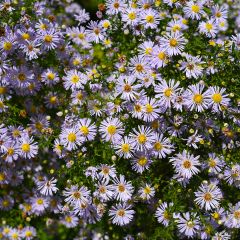
Kalimeris incisa
- Flowering time August to October
- Height at maturity 80 cm
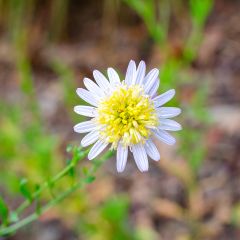
Kalimeris pinnatifida Hortensis
- Flowering time July to October
- Height at maturity 60 cm
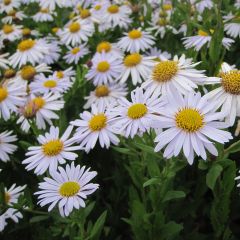
Kalimeris incisa Madiva
- Flowering time August to October
- Height at maturity 80 cm
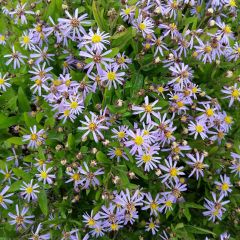
Kalimeris incisa Nana Blue
- Flowering time July to October
- Height at maturity 40 cm
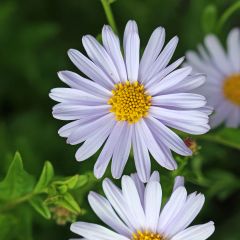
Kalimeris incisa Blue Star
- Flowering time July to October
- Height at maturity 60 cm
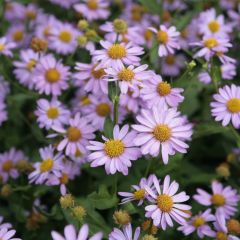
Kalimeris mongolica Antonia
- Flowering time August to December
- Height at maturity 80 cm
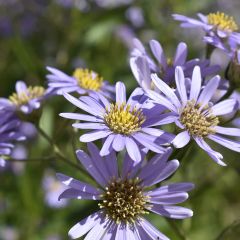
Kalimeris yomena Shogun
- Flowering time July to October
- Height at maturity 60 cm
Discover other Kalimeris
Planting
Where to Plant Kalimeris?
Very easy to grow and highly hardy (beyond -15°C), Kalimeris thrives throughout France. Robust, disease-free and undemanding, it is exceptionally adaptable. Once well-rooted, it flourishes year after year, becoming ever more floriferous. Give it space as its roots like to spread undisturbed.
This perennial holds its shape well, though it’s best planted in a sheltered spot away from strong winds that could flatten the clumps, even if its upright stems usually stand firm without staking.
It grows in any ordinary to rich, well-drained soil with a preference for cool conditions. While tolerant of most soil types as long as they’re not too dry, it truly excels in organically rich soil, which encourages abundant flowering.
It prefers full sun but also flowers well in light partial shade.
It thrives in well-drained soil that remains moist during summer, especially in its early years. Once established, Kalimeris will tolerate temporary drought and intense heat.
Remarkably versatile, with its natural, meadow-like charm, it’s perfect for wild and low-maintenance gardens. It blends seamlessly into any setting, excelling as a mid-border plant, background filler, or for flower beds and path edging.
Paired with other easy-going perennials, it creates effortlessly natural scenes, radiating fresh elegance. Taller varieties like ‘Madiva’, which may develop bare stems at the base, are ideal for the back of summer borders, adding height and airiness.
Some compact varieties (Kalimeris ‘Nana Blue’) also adapt well to container growing.
When to Plant Kalimeris?
Kalimeris can be planted almost year-round, avoiding frost and extreme heat, with a preference for spring (February to April) or autumn (September to November).
How to Plant Kalimeris?
In the ground:
Plant in groups of 5–6 to create drifts of airy blue or white stars, spacing them 30cm apart—they dislike root competition.
- Prepare the soil thoroughly, removing weeds and stones
- Dig a hole three times the rootball’s size
- Plant in a mix of compost and soil, keeping the crown level with the surface
- Mulch in spring to retain summer moisture
- Water regularly after planting
- Apply slug deterrent in spring to protect new shoots
In pots or containers:
Choose a compact variety and a large pot (minimum 30cm diameter and depth).
- Add a drainage layer (gravel or clay pebbles)
- Plant in a mix of compost and potting soil
- Mulch and water frequently, never letting the compost dry out
Maintenance, Pruning and Care
The Kalimeris requires very little attention. Once well-established in suitable soil, it needs no care or watering.
Hardy and remarkably adaptable, it fears almost nothing: neither diseases, nor bad weather, nor frost, nor strong winds (its stems won’t bend), nor drought, nor intense heat, which it can tolerate temporarily.
In summer, water during the first year after planting, then only during prolonged dry spells thereafter.
Remove spent flowers to encourage new blooms throughout the summer: simply snip just below the flower heads.
Once new stems reach 30 to 40 cm, pinch them back by removing the tip to promote branching and increase flowering. This way, the clump will thicken, become more resilient to harsh weather, and may even avoid the need for unsightly staking!
At the end of the season, leave a few faded stems standing—their striking silhouettes will add winter interest to the border.

Faded stems of Kalimeris incisa.
In spring or autumn, cut back the remaining dried stems to ground level.
Mulch in May to keep the roots cool in summer. Add compost every autumn.
As the plant ages, flowering may become sparse and show signs of fatigue: replace Kalimeris regularly. Every 3 to 4 years, in spring before they decline, divide the largest clumps.
Propagation: division, cuttings
The Kalimeris propagates easily by division or cuttings in spring.
Division
Divide clumps after 2 or 3 years, once the plant is well established. Divide in March-April.
- Using a spade, cut out sections from the outer edge of the clump, ensuring each piece has at least one vigorous rhizome segment or a leafy bud
- Replant these rhizome fragments immediately in well-prepared, moist soil or in pots
Taking Kalimeris Cuttings
To propagate kalimeris by cuttings:
- In spring, take 10 cm stem cuttings (you can use pinched stems for cuttings!)
- Remove lower leaves, keeping only the top leaves
- Insert cuttings halfway into pots filled with a mix of 2/3 compost and 1/3 sand
- Place cuttings in a humid environment with indirect light or partial shade
- Keep the growing medium slightly moist until roots develop
- Plant out young plants in the garden the following spring
Using and combining Kalimeris in the garden
The Kalimeris is the perfect perennial for long-lasting displays, bringing brightness, freshness and a natural touch. Its abundant and prolonged flowering in cool-toned harmonies of white, blue or mauve makes it indispensable in a garden with a naturalistic inspiration, cottage gardens and contemporary prairie gardens.
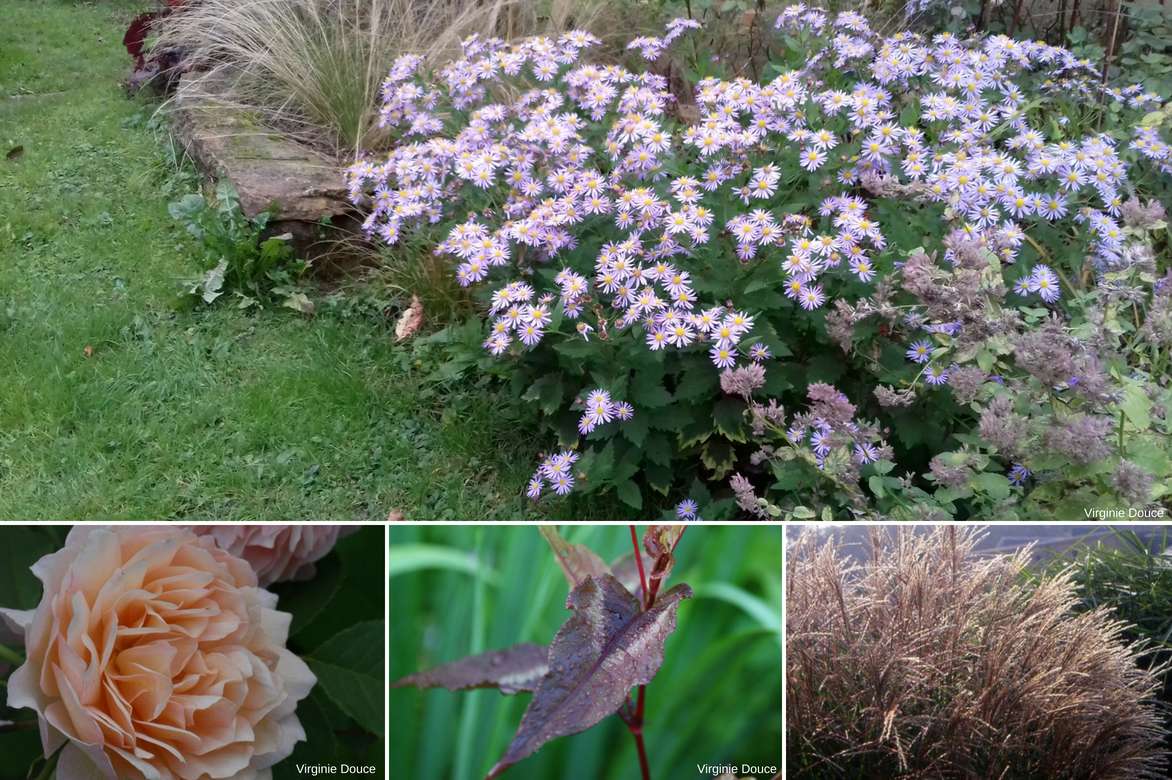

An example of natural pairing: Kalimeris incisa, Rose ‘Grace’, Persicaria microcephala ‘Red Dragon’, Miscanthus sinensis ‘Kleine Fontäne’.
It’s perfect for brightening up mixed borders in cottage garden style or for creating countryside scenes, romantic flower beds that stay fresh throughout summer alongside other low-maintenance perennials. This is the ideal plant for gardens without gardeners!
The flowers harmonise beautifully with pinks and purples and with almost all other colours, except perhaps lavender and mauve which may appear dull in comparison.
Pair Kalimeris with Asters to create airy clouds of starry flowers that extend the garden’s blooms until late summer and through autumn until the first frosts.
For effortless sunny spot colour, surround Kalimeris with an opulent mix of summer perennials – tough, hardy plants that grow vigorously year after year like Daisies, Yarrows, Heleniums, white and purple coneflowers, Knautia Arvensis – Field Scabious, Coreopsis, Globe Thistles or Phlox Paniculata Lilac Times, purple Salvias, Sedums, Lychnis coronaria, Burnets and Joe-Pye weeds.
Kalimeris bridges into autumn alongside autumn chrysanthemums and Japanese anemones. For dramatic contrast, pair summer-flowering blue varieties like ‘Blue Star’ with the intense red foliage of Euonymus.
In romantic plantings, it complements heritage roses, Buddleia or Euphorbia characias. The pale blue daisies look charming beside the silvery-blue foliage of Stachys byzantina.
As an edging plant, its mounding habit softens the base of taller summer bloomers like Tree Mallows, Dame’s Rocket, Hollyhocks, Lupins or Willowherbs.
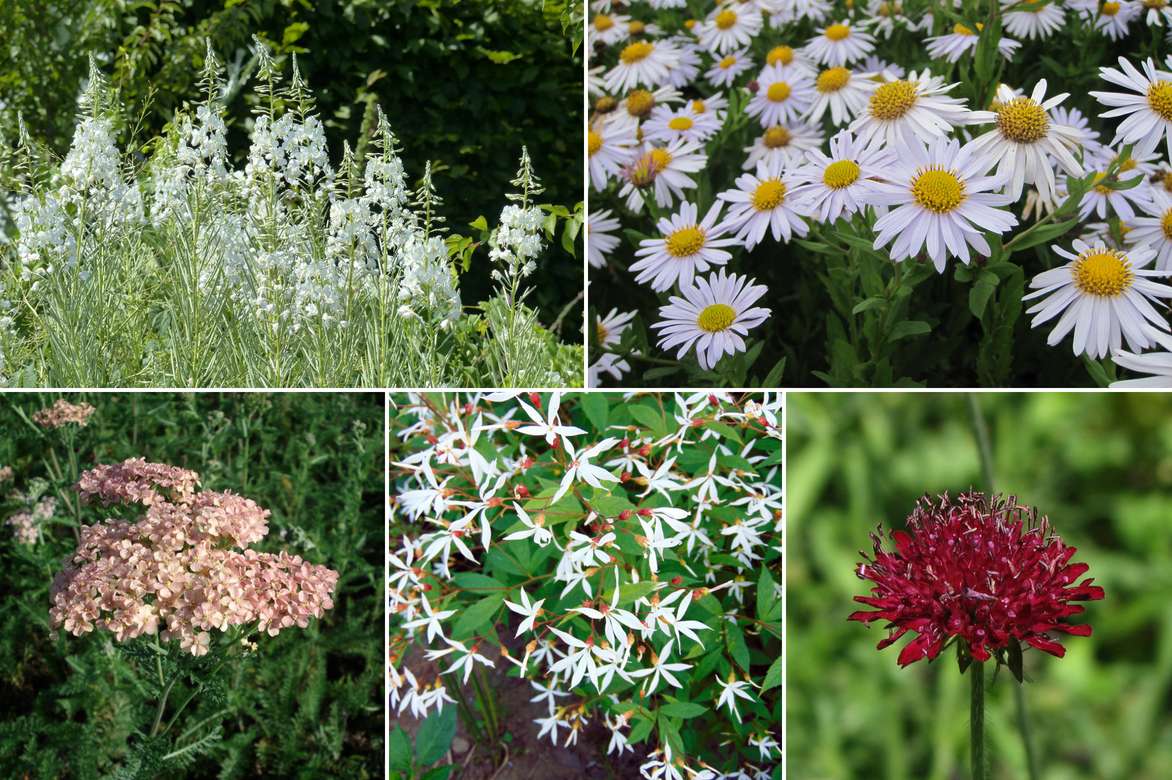

Planting idea: Epilobium angustifolium ‘Album’, Kalimeris incisa ‘Madiva’, Achillea millefolium ‘Salmon Beauty’, Gillenia trifoliata, Knautia macedonia.
For fresh summer borders, combine Kalimeris with groundcover roses (‘Larissa’) and spreading violet-purple hardy geraniums.
In naturalistic schemes, pair with feathery ornamental grasses like Fountain Grass, Feather Reed Grass ‘Karl Foerster’ with pink-bronze plumes, or Switch Grass ‘Warrior’ with red-brown autumn foliage, plus airy perennials like Gaura or Baby’s Breath to add movement and softness.
Useful resources
- Discover all our Kalimeris varieties and choose from our summer-flowering perennials to complement them
- Care guide: 7 ideas for pairing Kalimeris
- Care guide: How to grow Kalimeris in pots?
- Subscribe!
- Contents
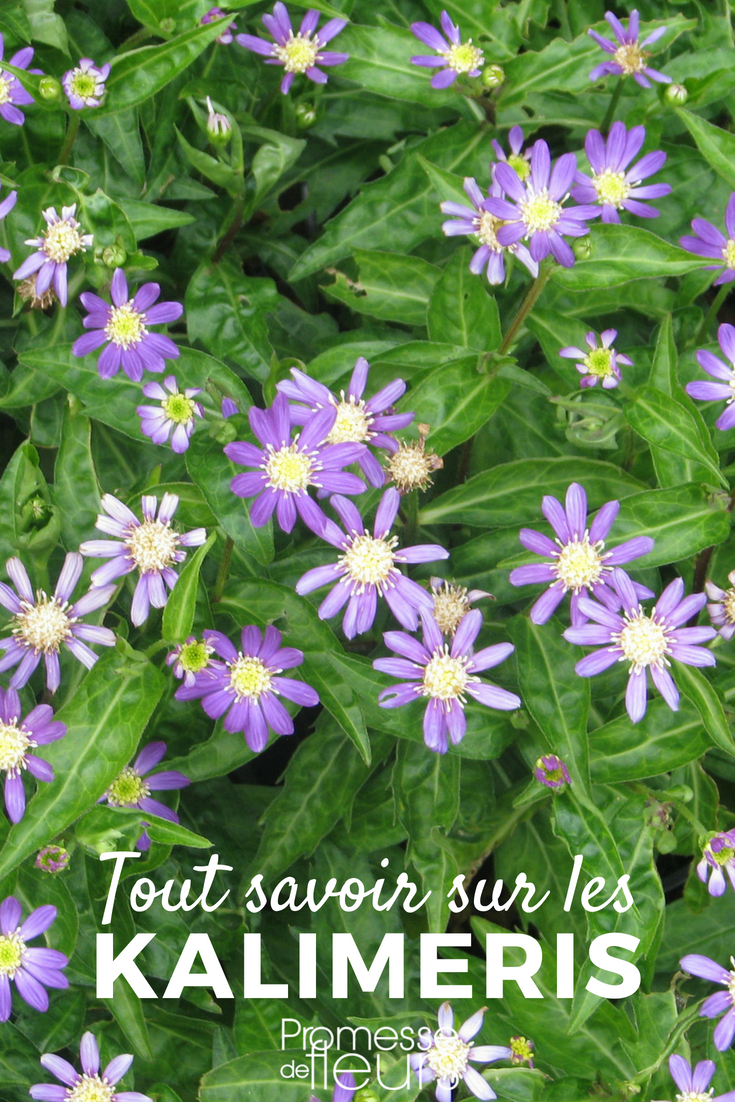


































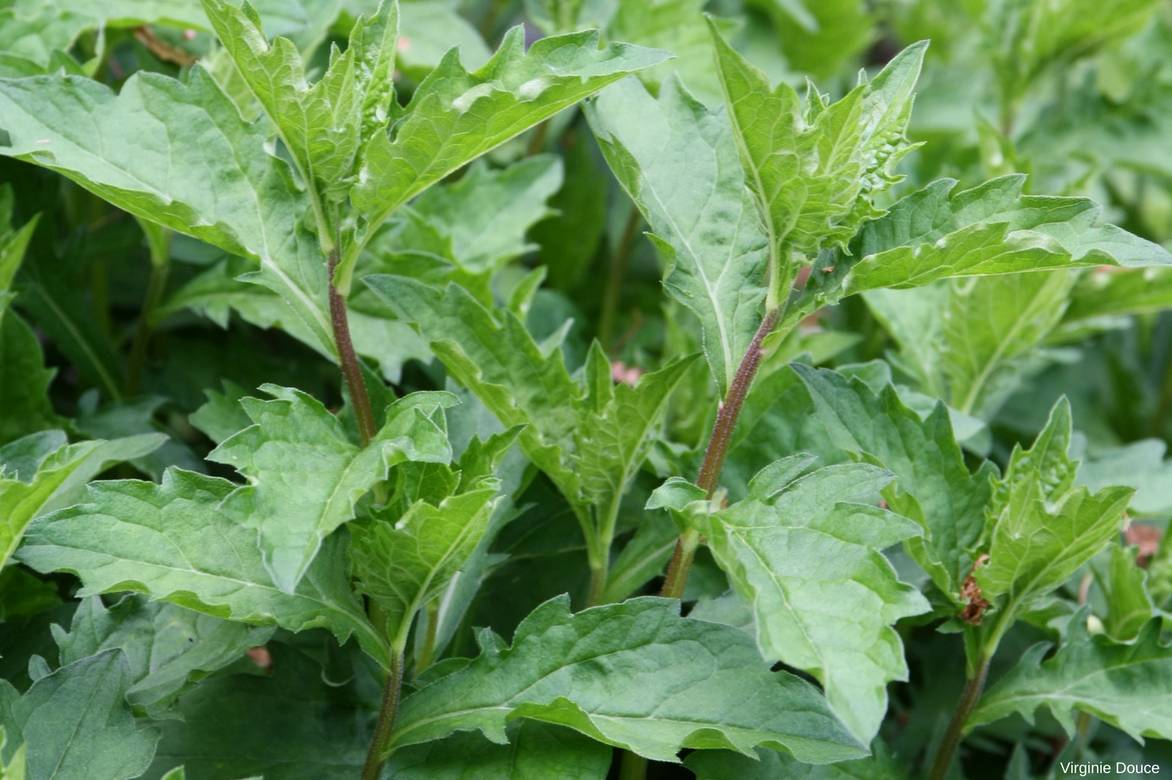
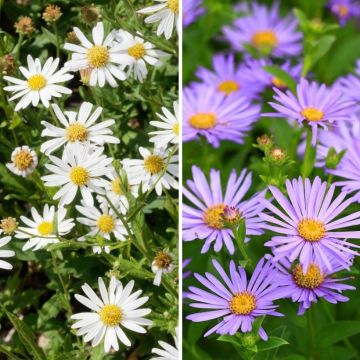

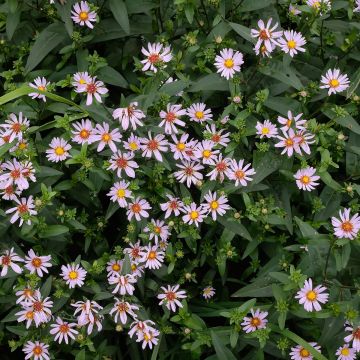




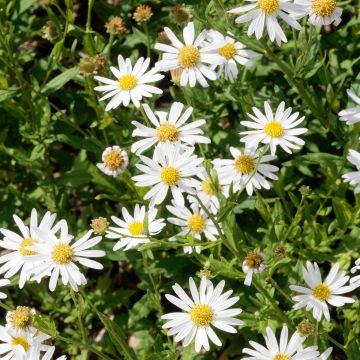
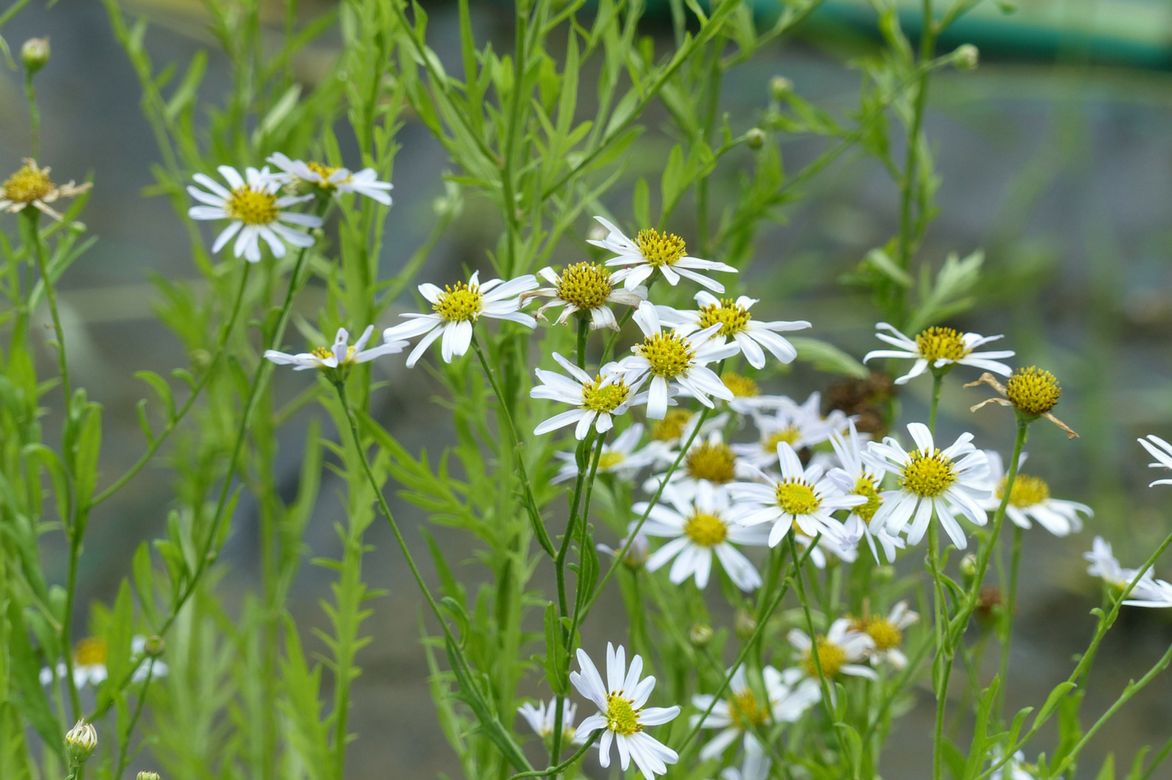
Comments